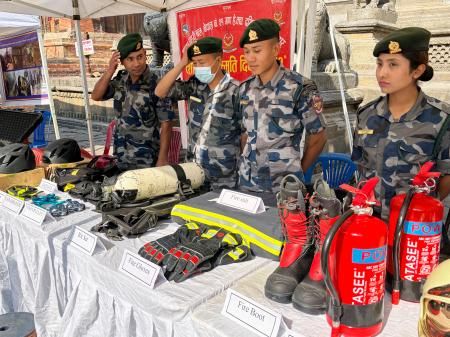Post-Earthquake Nepal: Progress and Challenges – A Decade of Resilience
Nepal's devastating 2015 earthquakes, measuring 7.8 and 7.3 on the Richter scale, left an enduring scar on the nation. The catastrophic events claimed thousands of lives, displaced millions, and caused widespread destruction of infrastructure and cultural heritage. A decade later, while significant progress has been made in recovery and rebuilding, numerous challenges remain. This article explores both the advancements and ongoing hurdles facing Nepal in its journey toward post-earthquake resilience.
Progress Made: A Decade of Reconstruction
The international community responded generously to Nepal's plea for aid following the earthquakes. Billions of dollars in assistance poured in, fueling substantial progress across various sectors:
Housing Reconstruction:
- Significant progress in rebuilding homes: The government's housing reconstruction program, though initially plagued by delays, has seen a considerable number of private homes rebuilt, particularly in rural areas. The use of improved building techniques and seismic-resistant designs has been a key focus.
- Challenges in urban reconstruction: Rebuilding in densely populated urban areas like Kathmandu remains significantly behind schedule, hampered by land ownership issues, bureaucratic hurdles, and complex urban planning challenges.
Infrastructure Development:
- Improved road networks: Many damaged roads and bridges have been repaired or rebuilt, improving connectivity and facilitating the transport of goods and services, crucial for economic recovery.
- Ongoing work on schools and hospitals: While a significant number of schools and hospitals have been reconstructed, many remain in need of repair or replacement, particularly in remote areas with limited access.
Cultural Heritage Preservation:
- Partial restoration of iconic sites: UNESCO World Heritage sites, including Kathmandu's Durbar Square and Boudhanath Stupa, have undergone extensive restoration efforts, though the process is ongoing and faces significant funding constraints.
- Challenges in preserving intangible heritage: The earthquake also damaged invaluable cultural practices and traditions. Efforts to document and preserve this intangible heritage are crucial for Nepal's cultural identity.
Ongoing Challenges: The Road Ahead
Despite the notable progress, several significant challenges continue to hinder Nepal's full recovery:
Funding Gaps and Inefficient Aid Distribution:
- Persistent funding shortages: While international aid has been substantial, funding gaps remain, particularly for long-term reconstruction and resilience-building initiatives.
- Transparency and accountability concerns: Concerns persist regarding the transparency and efficient use of aid funds, requiring improved governance and monitoring mechanisms.
Political Instability and Bureaucratic Hurdles:
- Slow decision-making processes: Bureaucratic delays and political instability have hampered the implementation of reconstruction projects, resulting in delays and cost overruns.
- Land ownership disputes: Complex land ownership issues, particularly in urban areas, have created significant obstacles to rebuilding and development.
Vulnerability to Future Disasters:
- Seismic risk remains high: Nepal remains highly vulnerable to future earthquakes, highlighting the need for ongoing investment in disaster preparedness and risk reduction measures.
- Climate change impacts: Nepal is highly susceptible to the impacts of climate change, including increased frequency and intensity of extreme weather events, further exacerbating its vulnerability.
Conclusion: Building a Resilient Nepal
Ten years after the devastating earthquakes, Nepal has made significant strides in reconstruction and recovery. However, substantial challenges remain, requiring sustained international support, improved governance, and a long-term commitment to building a more resilient nation. Addressing these challenges will not only ensure Nepal's full recovery but also safeguard its future from the impacts of both natural hazards and climate change. For more information on organizations involved in Nepal's post-earthquake recovery, consider exploring resources from organizations such as the UN Office for the Coordination of Humanitarian Affairs (OCHA) and the World Bank. The path to a truly resilient Nepal demands collaborative action and a steadfast commitment to long-term sustainable development.
